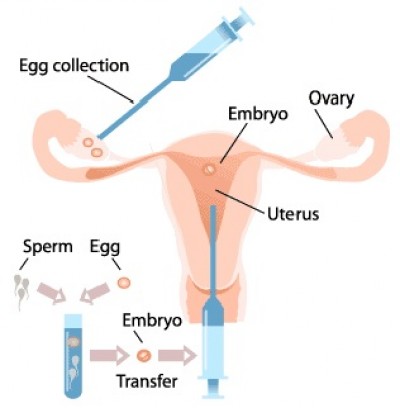IVF – in vitro fertilization
In-Vitro Fertilization, shortened to IVF, is a technique involving the fertilization of eggs using sperm outside the patient's body. The term "In-Vitro Fertilization" literally means 'fertilization in glass' - hence commonly described as test-tube baby technique. IVF treatment is made up of number of several procedures usually referred to as treatment cycle. The full treatment cycle consists of multiple steps.
IVF - Step by Step
First of all, the female patient is prescribed a drug which suppresses the release of the hormones responsible for the production of eggs. This is a necessary step in order to establish a base required to start ovarian stimulation. Once the base has been established, ovarian stimulation can proceed. This takes the form of a daily intra-muscular injection. Stimulating the ovaries produces multiple eggs to ensure that there are enough for fertilization. Regular monitoring of the effects of the drugs on the ovaries is performed through ultrasound scans and blood tests.
Once the ultrasound scan and blood tests show a sufficient number of mature follicles, a final injection is administered. It is performed to ensure the ripening of the eggs in preparation for the egg collection. Eggs are collected from the ovaries through the vagina using a fine needle under ultrasound guidance. This is performed as a day-case in our Care Unit, typically under sedation.
On the day of the egg collection, the male partner is required to produce a semen sample. The sample is then prepared in the laboratory to extract the most motile sperm. When all the female patient's eggs have been collected, they are put in a dish with the prepared sperm to be incubated in the laboratory. Approximately sixteen hours later, the eggs are checked to see whether fertilization has occurred.
Two to five days after egg collection, if fertilization was successful, usually two of the embryos are transferred directly into the uterus.This is done through the vagina and cervix using a fine catheter. In the most cases this procedure is painless. Fourteen days after the transfer a pregnancy test should be performed. If the result is positive, two to three weeks after an ultrasound scan is recommended in order to check if the embryo is alive and situated in the uterus.
